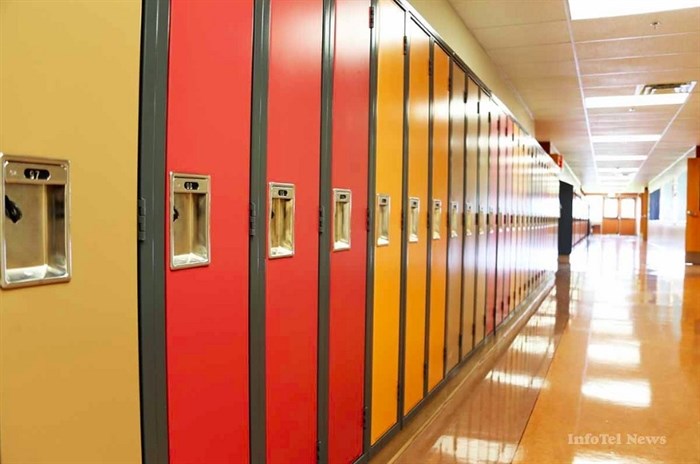
Image Credit: Jenn Stahn
August 26, 2020 - 2:40 PM
B.C. schools are gearing up for full-time in-class learning but parents may not be ready, the Minister of Education acknowledged today while laying out the plans for the return to school.
Rob Fleming said today, Aug. 26, he encourages all families to visit their local school district website to find out the details of their school plans before leaping to any conclusions and to register, even if they aren't ready to return just yet.
"These plans will help you visualize what your child's school and learning environment will look like this fall, and families should feel more confident knowing that schools are doing everything possible to keep students and staff safe," Fleming said. "While there's no substitute for in-class learning, we also know there are families who, for medical health or other reasons, don't feel comfortable yet having their children back in class. And that is completely understandable. We understand that parents and caregivers are looking for more options. And this is something we've been discussing in great detail with our stakeholder-led steering committee and education partners for the past several weeks."
Based on these discussions, Fleming said it's his expectation school districts will be flexible and will work with families, to provide options to keep children connected to their school. That's why enrolling will be so important. By doing so, parents will be able to ensure the funding for the district, which is calculated on a per-student basis, is accurate and that the funding for their child's education, in particular, is in place, regardless of the path they choose.
Since the plan was announced on July 29, many districts have already started engaging with parents to determine their needs.
"When it comes to options, B.C. is a diverse province and there isn't a one-size-fits-all approach," he said. "Every school, every school district will do what fits best with their local community needs and we've given them the ability to be flexible and find options that work for families. We've given them the tools they need to increase their existing programs, and to identify and meet new demand. We've extended the authority to all school boards to flexibly offer remote learning programs to students within their districts and local bricks and mortar schools."
Districts were provided with the ability to expand their local Distributed Learning programs to include additional grades and services to students and school districts to meet those local needs. Internet access has been upgraded for all schools in the province, through the K to 12 next-generation network.
Schools are also ready to shift the delivery of learning if COVID-19 cases rise, deputy minister of education Scott MacDonald said.
"(The current plan) provides us a framework in which we can respond to any kind of shifts that might happen in the community and shifts that might happen with regards to changes in COVID-19 prevalence in the province," MacDonald said, explaining that their students are re-entering the schools in what's been deemed stage 2.
"We are set up in a way that, should something happen in the community and the prevalence increases and we need to have additional controls, we can very smoothly shift to stage three."
Stage three is a hybrid of online and in-class learning. In contrast, when schools closed in March they were in stage five — fully remote learning.
The aim is to keep learning in classrooms going, and the method they're banking on focuses on reduced levels of contact among students and higher levels of cleanliness to make that happen.
"We've got the learning groups, which are a group of staff and students who remain together throughout a semester... and they primarily interact with each other," MacDonald said.
In some cases they can be classes or others will be multiple classes together, but they stay together as a group.
When they're unable to stay within that group, then physical distancing measures are to be applied.
So inside learning groups, students and teacher don't need to physically distance themselves. Outside of those groups, they will and then the final line of defense is wearing a mask.
The ministry also made investments, announced last month, of $45 million for enhanced cleaning and hand washing stations.
"I just want to point out the fact that schools are very different than a lot of other organizations," he said. "They are controlled environments. We have limited access, we know exactly who's in the building, we know when they're there we know where they move to in the buildings based on timetables, and we have a full suite of measures that we have that collectively contribute to the safety of students so it's not just a matter of wearing masks, not just matter of cohorts."
The trial run in June, has "proven" a safe return to schools can be done.
While there are assurances that this can be done, MacDonald acknowledged there is some parental concern and he recommended that, regardless of what decision they eventually reach, parents enrol at the school.
To contact a reporter for this story, email Kathy Michaels or call 250-718-0428 or email the editor. You can also submit photos, videos or news tips to the newsroom and be entered to win a monthly prize draw.
We welcome your comments and opinions on our stories but play nice. We won't censor or delete comments unless they contain off-topic statements or links, unnecessary vulgarity, false facts, spam or obviously fake profiles. If you have any concerns about what you see in comments, email the editor in the link above.
News from © iNFOnews, 2020